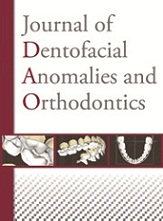No CrossRef data available.
Article contents
Transpositions of maxillary canines. Periodontal aspects and orthodontic therapy
Published online by Cambridge University Press: 22 November 2010
Abstract
The exchange of position of two adjacent teeth constitutes a transposition. Maxillary canines are rarely affected; transpositions of upper canines occur in only .2% of the orthodontic population. They can be detected early in radiographic examinations and later, clinically, after they begin to erupt. Most writers affirm that transpositions, which are often associated with other dental anomalies, are caused primarily by some genetic defect but that local factors may contribute to their development. Practitioners should consider their muco-gingiva environment as an important factor in their evaluation of the iatrogenic risks that might accompany treatment and consider improving soft tissue status as a preparatory soft tissue therapeutic procedure. They must also differentiate between cases of incomplete transposition and partial complete transposition, which can almost always be successfully treated, from cases of total complete transposition that are relatively difficult if not impossible to treat.
- Type
- Research Article
- Information
- Journal of Dentofacial Anomalies and Orthodontics , Volume 13 , Issue 2: The canine (Part 2) , June 2010 , pp. 133 - 150
- Copyright
- © RODF / EDP Sciences, 2010




